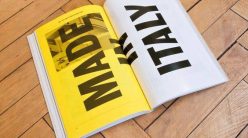Duke Karl I provided Great Britain with almost 4,000 foot soldiers and 350 dragoons under General Friedrich Adolf Riedesel. [11][a], Impressment, essentially conscription by the "press gang", was a favored recruiting method, though it was unpopular with the public, leading many to enlist in local militias to avoid regular service. Churchill would go on to proclaim that these very same British forces were"gallant and honourable officers". [45], During the course of the war, the British army conducted large-scale mock battles at Warley and Coxheath camps in southern England. The rebelling colonists did use guerilla warfare quite often though. After French assistance helped the Continental Army force the British surrender at Yorktown, Virginia, in 1781, the Americans had effectively won their independence, though fighting would not formally end until 1783. . [39] Howe had the advantage of large numbers of reinforcements, and was the brother of Admiral Richard Howe, the Royal Navy's commander in chief in America. [27], Officers in British service could purchase commissions to ascend the ranks,[28] and the practice was common in the Army. Jeffrey Amherst was appointed Commander-in-Chief of the Forces in 1778, but he refused a direct command in America because he was unwilling to take sides in the war. "I cannot too much commend Lord Cornwallis's good services during this campaign, and particularly the ability and conduct he displayed in the pursuit of the enemy from Fort Lee to Trenton, a distance exceding [sic] eighty miles, in which he was well supported by the ardour of his corps, who cheerfully quitted their tents and heavy baggage as impediments to their march." However, the alarming figure is based on assumptions . 1:998, Lieutenant General Parker to Barrington, 19 June 1778, War Office Papers, 1:1005, Oughton to Jenkinson, 27 May 1779, War Office Papers, 4:966, Jenkinson to Amherst, 26 October 1779, Forteseue, The British Army, 17831802, p. 34, Riedesel, Mrs. General, Letters, and Journals, translated from the original German by W. L. Stone (Albany, 1867) p. 125. [42], The following is the British Army's strength based on Lord North's reports. Between 1775 and 1781, the regular army increased from 48,000 to 121,000. General Howe, December 20, 1776[90]. Five Guns You Need to Know From the American Revolution: This page outlines the most well-known guns used during the American Revolution and . Grant also reinforced the fleet with 925 soldiers. He became known as "the butcher" to the colonials due to his brutal tactics and actions taken at the Battle of Waxhaws. [95] However, in the pre-dawn hours of 26 December, Washington crossed back into New Jersey and captured a garrison of Hessians at Trenton. An outspoken Tory in Newark who cheered the arrival of British soldiers reportedly had "his very shoes taken off his feet, and they threatened to hang him.". [citation needed], British Army during the American Revolutionary War. Many British officers regarded the German regiments as slow in mobility,[86] therefore British generals utilised them as heavy infantry. In 1778, Georgia militiamen captured, stripped, and killed BritishLt. John Kemp along with nine of his men for refusing to renounce the king. Following the Treaty of Paris, the British army began withdrawing from its remaining posts in the Thirteen Colonies. [35], In 1776, there were 119 generals of various grades in the British Army. The former Continental army officer, Benedict Arnold, now a brigadier of the British army, led a force with William Phillips raiding and destroying rebel supply bases. Wikipedia Article. Major-General Baron Friedrich Wilhelm von Lossberg wrote, "They [the British] have their colours with them only when quartered, while we carry them with us wherever the regiments go the country is bad for fighting. "If you cannot relieve me very soon, you must prepare to hear the worst." [citation needed], At the Battle of Vigie Point in 1778 a force of British infantry who were veterans of colonial fighting inflicted heavy casualties on a far larger force of regular French troops who advanced in columns. "I do not think that there exists a more select corps than that which General Howe has assembled here. The totals in North America specifically are listed in parenthesis.[43]. As we approach Independence Day, Slaughter shares three little known facts about the American Revolution for you to bring to your 4th of July picnic: At no time did more than 45 percent of colonists support the war, and at least a third of colonists fought for the British. This is primarily because of the German officers' reluctance to adopt loose formations. In the 1930s, both the United States and Britain refrained from targeting civilians in wartime bombings regarding such actions as savage and ruthless. With the ascension of peace in 1763 the army was dramatically reduced to a peacetime home establishment of just over 11,000 men, with a further 10,000 for the Irish establishment and 10,000 for the colonies. A blister rose on spot. report. per day,[6] the same pay as for a New Model Army infantryman 130 years earlier. British infantry regiments possessed two flags: the King's Colour (the Union flag) and their regimental colour, which displayed colour of the regiment's facings. Imperial troops of the East African King's Rifles escort a supply train during the Mau Mau Uprising. 1.5M subscribers in the AskHistorians community. He took command when the widening of the war compelled him to relinquish troops to other theatres, and became embittered at the Government's demands that he bring the war to a successful conclusion with fewer troops and resources than had been available to Howe. After winning a hard fought battle at Freeman's Farm, bought with heavy casualties, Burgoyne complained at the inexperience of his soldiers,[99] that his men were too impetuous and uncertain in their aim, and that his troops remained in position to exchange volleys too long, rather than switch to the bayonet. What did the colonists face during the Revolutionary War? After the losses at the Battles of Saratoga and the outbreak of hostilities with France and Spain, the existing voluntary enlistment measures were judged to be insufficient. John Burgoyne drank heavily on a nightly basis towards the end of the Saratoga campaign. Meanwhile, Greene moved back into South Carolina and began attacking the British outposts there. The camps, which consisted of tents as the only shelter for . One primary difference in the 18th century was that care and supplies for captives were . The Portal for Public History. [citation needed], In 177172 the British army began implementing a new training scheme for light infantry companies. [7] The rate of pay in the army was insufficient to meet the rising costs of living which did not help entice potential recruits,[8] as service was nominally for life. After the war, he was an antagonist to the English . These loyalists supported the British for many reasons. However his role in advising the government on strategy was limited and Amherst found himself primarily occupied with the organisation of home forces to oppose the threatened invasion in 1779, and suppress the outbreak of severe anti-Catholic rioting in 1780. The "Old IRA" was originally known as the Irish Volunteers. Approximately 9,000 Hessians arrived with Howe's army in 1776[85] and served with British forces through the campaigns in New York and New Jersey. Defeat at the Siege of Yorktown to a combined Franco-American force ultimately led to the loss of the Thirteen Colonies in eastern North America, and the concluding Treaty of Paris deprived Britain of many of the gains achieved in the Seven Years' War. [15] Competition between naval and army press gangs, and even between rival ships or regiments, frequently resulted in brawls between the gangs in order to secure recruits for their unit. In 1767, in an attempt to recoup the considerable treasure expended in the defense of its North American colonies during the French and . And eventually adopted the name Irish Republican Army as they became the official military of the revolutionary government in Ireland during the Irish War of Independence. . Slate is published by The Slate Group, a Graham Holdings Company. hide. Is civilian life better than . However, since generals never retired, perhaps a third of this number were too old or infirm to command in the field. The most common infantry weapon was the Brown Bess used with a fixed bayonet. What did civilians do during the Revolutionary War? On 1 April 1779, Lord Germain instructed Grant to establish small garrisons throughout the West Indies, Grant believed this would be unwise and instead concentrated defences to cover the major naval bases. Many of the civilians killed by the Army were genuinely innocent bystanders whose deaths were unintended, but let's not kid ourselves here, many of them were deliberately targeted by the Army or the soldiers involved were reckless in the extreme and in many cases the Army deliberately covered up or simply lied about the circumstances. The position of Commander-in-Chief of the Forces remained vacant until 1778 when it was given to Jeffery Amherst, 1st Baron Amherst who held it until the end of the war. The two brothers gained much success in 1776, but failed to destroy Washington's Army. [79] The soldiers' own families were permitted to join soldiers in the field. All rights reserved. British forces then fought a series of actions to consolidate control of Manhattan Island, culminating in the Battle of Fort Washington which resulted in the capture of close to 3,000 Continental troops. However part of his army was destroyed at Bennington. In the ensuing Battle of Long Island on 27 August 1776, the British outflanked the American positions, driving the Americans back to the Brooklyn Heights fortifications. Britain had a difficult time appointing a determined senior military leadership in America. [14] Attempts were made to draft such levies, much to the chagrin of the militia commanders. "[63], Fortescue similarly describes the action: "Advancing in skirmish order and keeping themselves always under cover, the light companies maintained at close range the most destructive fire on the Heavy French columns At last one of the enemy's battalions fairly gave way and the light companies followed them to complete the rout with the bayonet".[64]. Large numbers of scouts and skirmishers were also formed from loyalists and Native Americans. HM forces (including American provincials) never locked American civilians in churches and burnt them alive. [84] Without a large cavalry force to follow up the infantry, retreating American forces could often escape destruction. This slightly shorter version of Bess was the preferred weapon of much of the British Army. One of the hardships was that many colonists were loyalists. Edward Jenner found the vaccine for smallpox. The British under Edward Despard however succeeded in retaking the Black River settlement in August 1782 with the surrender of the entire Spanish force. In November 1778 the establishment was set at 121,000 men, of whom 24,000 were foreigners, along with 40,000 embodied militia. In 18th and 19th century warfare 'the colours' often became a rallying point in the most bitter actions. Cornwallis's ravaged army met Greene's army at Battle of Guilford Court House, and although Cornwallis was victorious he suffered heavy casualties. After inconclusive skirmishing with Washington's army at the Battle of the Clouds, a battalion of British light infantry made a surprise assault upon an American camp at the Battle of Paoli, eschewing their muskets in favor of their bayonets to minimize the sound they made as they approached. [104] In May 1780 an army of 11,000 men under the command of Henry Clinton and Charles Cornwallis captured Charleston along with 5,000 of the Continental army. [55] The 80th regiment was disbanded in 1764 and the other ad-hoc light infantry units were converted back to "line" units, but infantry regiments retained their light companies until the mid-nineteenth century. The church-burning scene in The Patriot is actually based on an incident from World War II, when Nazi soldiers burned a group of French villagers alive. [99] Burgoyne did not want to lose the initiative and immediately prepared a second assault to puncture the Gates' army scheduled for the following morning,[100] however his subordinate General Fraser advised him of the fatigued state of the British light infantry and Grenadiers and that a renewed assault following a further night's rest would be carried out with greater vivacity. Did the British kill civilians during the Revolutionary War? Many in the South initially migrated to British Florida, including 2,000 whites and 4,000 blacks from Georgia. A detailed order of battle for British Army forces in North America circa October 1778 is as follows (about one-third of its then-strength is discounted due to disease, desertion, and other causes; the listed troops are solely effectives): Infantry formed the backbone of crown forces throughout the war. Yumpu. Page 18. Over 8,000 soldiers were killed in battle, and over two thousand died from illness or starvation. Lt. Col. Banastre Tarletonthe model for The Patriots main villainreportedly killed more than a hundred colonial prisoners in South Carolina and was dubbed Bloody Ban. The term Tarletons quarter signified no quarter at all.
What Drugs Cause Bags Under Eyes,
Gas Stations Between Thunder Bay And Kenora,
Nick Kuenssberg Daughter,
Articles D





